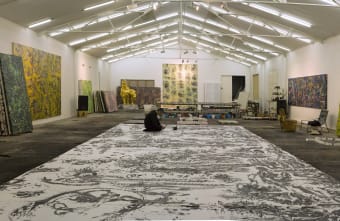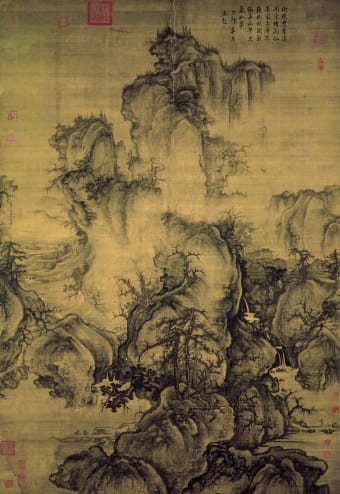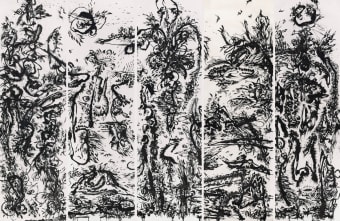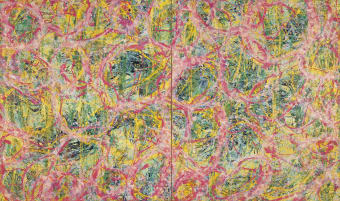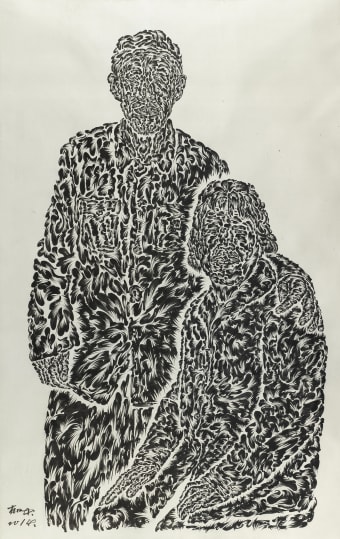|
The promise of the multi-polar, pluralistic world that we live in today is that each of us as global citizens can create our own world view from amongst a range of historically divergent sources, cultural traditions and individual thinkers. In such a world, the potential of any contemporary artist is not so much the originality or individuality of his or her artistic expression but rather the depth, singularity and import of his or her contribution to this formative global dialog.
In this regard, Huang Zhiyang 黄致阳 is one of the most interesting contemporary artists working today. Born in Taiwan and raised within its traditional cultural milieu, Huang has set his artistic focus on excavating and expressing for contemporary international audiences the holistic and naturalistic moral cosmology of pre-modern Chinese philosophy, particularly that of Song dynasty (960-1279) neo-Confucianism also known as 道学 Daoxue (the study of "the Way") or 理学 Lixue (the study of "Order").
The world of the Song neo-Confucians is radically different from the mechanistic and dualistic world view of European Enlightenment thinkers, such as Galileo, Descartes, and Newton or from the transcendental metaphysics of much of Western religion and philosophy. On the other hand, because Chinese philosophy, in general, tends towards the pragmatic and Song Daoxue, in particular, derives from empirical observation ("the investigation of things" 格物 gewu), this pre-modern Chinese world view is largely consistent with our modern scientific views of reality — the emergent world of energy physics, non-linear dynamics, chaos and complexity theory, pre-biotic evolution, metabolic chemistry, microbiology, evolutionary biology, deep ecology, neurology and phenomenology.
The Song Daoxue world view is also a holistic one in which the origins of a physical universe of energy and matter, the unfolding of a biotic world of organismic life, the emergence of consciousness in the minds of sentient beings, and the development of human societies based on man's moral nature, is an integrated reality that is continuously unfolding and differentiating on multiple emergent levels.
Artists from the Song dynasty expressed this unified world view with a single artistic metaphor: the landscape, for which Guo Xi's 郭熙 (ca. 1020-ca. 1090) Early Spring is exemplary (fig. 2). Whether discussing the physical universe, nature and life, the human mind, or society and moral ethics, the Song painters used the landscape, along with a thickly layered semiotics of performative brush gesture, natural ink qualities, form resemblances and symbolic metaphor — philosophical, poetic, biographic and historical in nature — to explore the integrated and holistic nature of reality.
Huang Zhiyang intuits, however, that the landscape, as a single metaphor for all levels of reality, fails to reflect the complexity of our modern world view. Instead of using a single metaphor, Huang has developed a different visual metaphor for each nested level of order within the unified world-view of the Song philosophers.
In his Three Marks series, Huang explores the foundations of reality in the physical world of energy (气 qi) and order (理 li) –specifically the capacities of dynamically balanced forces (阴 yin and 阳 yang) and phase states (五行 wu xing) to give order and pattern (li) to flows of energy and matter (qi) (fig. 3).
In the video installation I am cute germs, Huang examines the microscopic world of single-celled and multi-cellular organisms. Unknown to traditional Chinese philosophers, this microcosmos marks the transition from the physical world of energy and matter to the biotic work of self-maintaining and self-replicating forms of life (fig. 4).
In the Zoon-Beijing Bio series, Huang returns to the language of brush and ink to depict the emergence of a natural world full of organic life forms — plants, animals, birds, insects and, humans. All organic life emerges from the same interdependent flows of matter and energy (qi), exhibits its own immanent form and character (li), and manifests its own history of co-emergent unfolding. This cosmogony of unfolding complexity resulting in organic life finds it origins in early Daoism (fig. 5). In his Zoon-Dreamscape series, Huang Zhiyang's language expands dramatically with the addition of high-gamut mineral pigments and pure, gestural abstractions. Building upon the ground of the organism in its world, Huang sets out to the nature of cognition or our subjective experience of sense, perception, feeling, emotion, memory, and consciousness. This phenomenological reality closely reflects the Buddhist view of the human mind and its functioning (fig. 6).
Finally, in the Lover's Library series, Huang reflects back for us to see the universal foundations of human family, community and society in our individual and inter-subjective moral natures. Huang's focus in the New York, Hong Kong, and Taipei-based works in this series was the foundational human virtue of love. In his latest Beijing-based works, however, Huang expands his concerns to encompass the broader range of moral virtues that underlie a distinctively Confucian concept of humanity (fig. 7).
Every one of Huang's series is a world into itself. In the gallery updates to follow, we will explore the visual and symbolic language he uses to capture and express his ideas on each of these co-emergent levels of reality. |
Huang Zhiyang – Introduction: The Phenomenology of Life
Craig Yee
